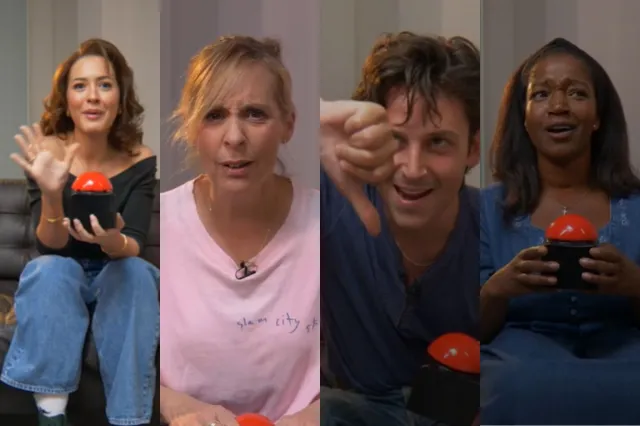Let's talk about sets: Anthony Ward on Patrick Marber's The Red Lion
We chat to set designer Anthony Ward about the process of designing the set for Marber’s new play
Obviously I was delighted to be asked to do Patrick’s [Marber, writer] play but I don’t have any football gene whatsoever.
The big thing for me was the detail of it. First of all you’re in the Dorfman so how are we going to use that space? Is it an end-on play? Is it in traverse? How might the play sit best in that theatre? We had a lot of conversations about that and the angle of the rake.
It’s a three character play and I wanted the focus on them to be very intense and the audience to be as close as you could possibly get to these people, so we started off by exploring setting it on a platform in the middle of the stage, but of course, one of the crucial things in this play is that the kit man spends the first 15 minutes of the play ironing the football team’s kit and hanging it up on a hanger, and the minute you don’t have any walls you’re slightly sunk on where you are going to put all the kit.
I think Patrick had very strong instincts that it was an end-on play, so when he came to see Ian [Rickson, director] and myself he very much advocated for the end-on experience.
One of the first things I presented to Patrick was a very, very low ceilinged changing room – trying to keep it very intense and focused – I’d had the door opening on the stage left side and I’d made it all about a wall of pegs for these shirts to hang on, so I took it totally theatrically in that sense. Patrick came in and said "In a changing room you’re going to have at least have two benches opposite one another. You’d never just have a bench down one side of a wall". So I'm going "Oh, God, typical! This is me approaching it theatrically and not approaching it from a real perspective. That was my big battle, to absorb all those real elements and the nature of the space.
Patrick invited us all down to Lewes – the football club he’s very closely associated with – and two weeks later we went down on a freezing cold wintery afternoon, while everybody was on the pitch we were in the changing rooms taking photographs. Patrick would be going "Oh look at this! I love this!" picking up huge tubs of liniment, photographing terrible plumbing in the loos and the general mess of it all. That was a complete bible to me.
Patrick talks about the space having a sense of history, you imagine it was probably in an Edwardian building and over the years it’s been redecorated and had strip lighting put it, whereas Lewes is like a floor added onto a cricket pavilion, it’s very 1970’s. I had to put the two things together, using a lot of reference pictures, photographs of much older changing rooms. I found some black and white photographs of an Arsenal changing room from the early 60’s and I took some elements from them.
Different plays have different challenges, different scales and dynamics. Designers are given the world of the play and that could be anywhere in the world – it could be metaphysical – and it’s our job to respond to that. Being really boring and realistic in this one, my worry was like ‘oh my god I’ve really got to deliver this football thing'. That for me was the thing to overcome. But Ian and Patrick were wonderful and so helpful.
The most enjoyable part? I loved working with the painters on this. The painters are fantastic in the paint shop at the National. Now you’ve got the new assembly area backstage, I mean that’s just brilliant. It makes you realise what a wonderful theatre that is to work in when you’ve got people like that around you.
The Red Lion runs at the National Theatre until 30 September 2015.













